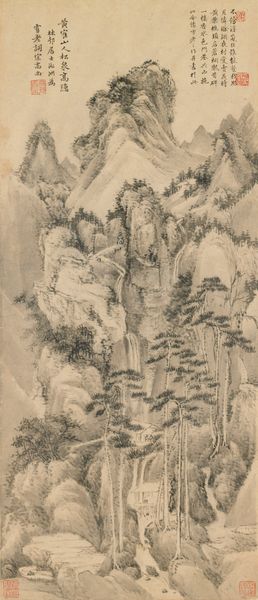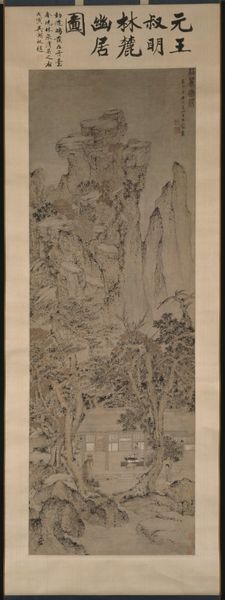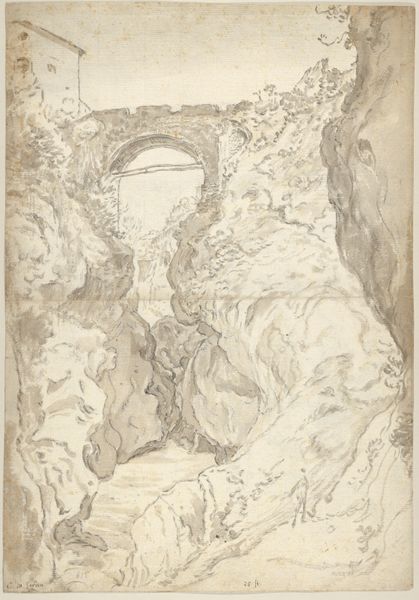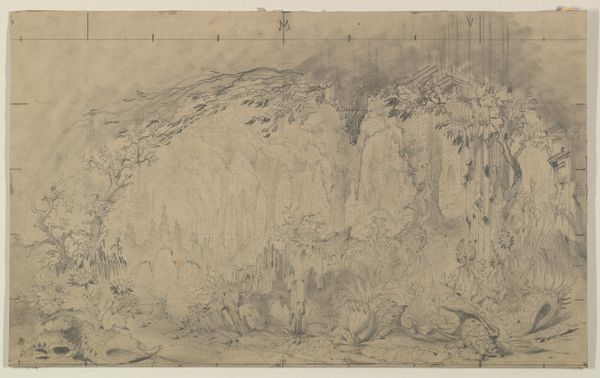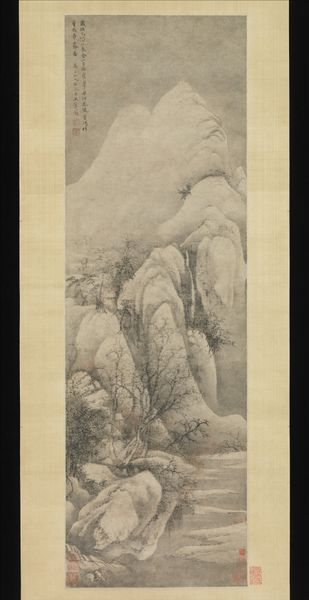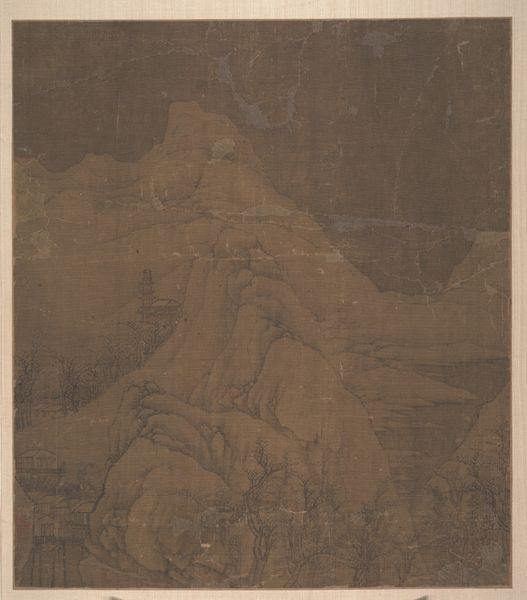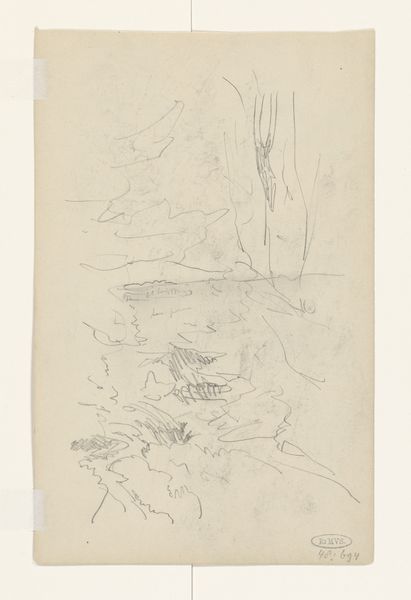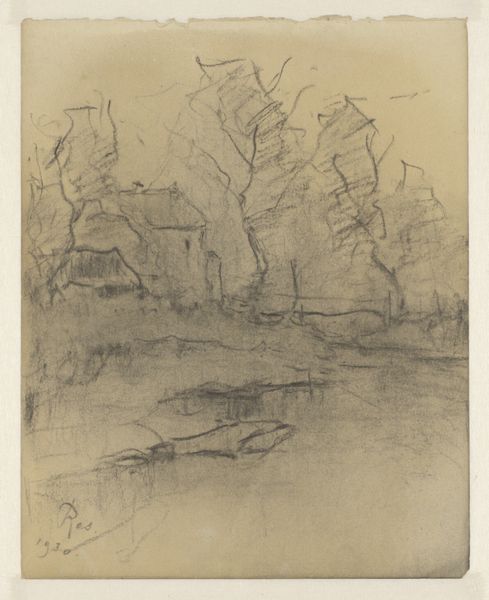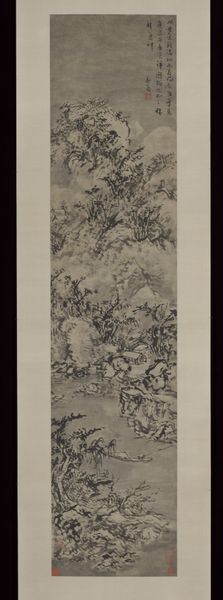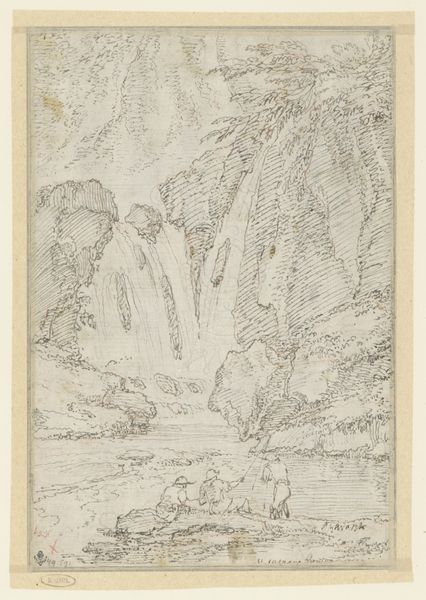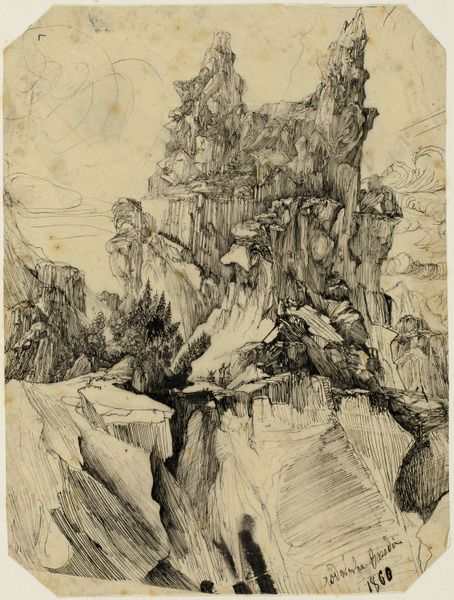
drawing, ink
#
drawing
#
asian-art
#
landscape
#
ink
#
ink drawing experimentation
#
mountain
#
calligraphy
Dimensions: Image: 66 7/8 in. × 30 in. (169.9 × 76.2 cm) Overall with mounting: 10 ft. 2 3/4 in. × 37 1/16 in. (311.8 × 94.1 cm) Overall with knobs: 10 ft. 2 3/4 in. × 41 in. (311.8 × 104.1 cm)
Copyright: Public Domain
Curator: Immediately striking is the raw energy of this ink drawing; a craggy, almost primordial landscape unfolds before us. Editor: You’ve eloquently captured my first impression, its energy feels somewhat unsettling. A landscape depicted with a nervous hand, would you agree? Curator: It’s a controlled nervous energy, if that makes sense. This is "The Strange Pines of Mount Tiantai," created in 1687 by Dai Benxiao, and currently residing here at The Metropolitan Museum of Art. Benxiao was known for pushing the boundaries of traditional ink techniques. Editor: The "strange pines," I see! Twisted, almost like watchful sentinels guarding this sacred mountain. There are two figures too, solitary, contemplative almost like hermits. Does this location have particular significance? Curator: Absolutely. Mount Tiantai has deep roots in Chinese Buddhism and Daoism; it’s considered a place of enlightenment. Benxiao wasn’t simply painting a picturesque scene. In using dramatic composition with abstract angular forms, I feel like he emphasizes Mount Tiantai to suggest an intimidating journey. Editor: Yes, precisely! There’s also a fascinating duality, a push-pull between the spiritual aspiration of mountain ascetics with this sense of earthly discomfort. That contrast feels powerful. How did this experimentation affect Benxiao’s position within artistic circles? Curator: In many ways it elevated his position! Benxiao refused to serve in the Qing court, but aligned himself as a Nanking loyalist. Creating work like this one—allowed his art to become an instrument of personal and political resistance, and aligned himself with those intellectual artistic circles. His highly expressive and individualistic style became celebrated for capturing something profoundly genuine about the artist’s state of mind and resistance. Editor: And now it reverberates through the centuries. You see both a historical record and an active psychological narrative expressed through mountains and strange pine trees. It is powerful how symbolic imagery maintains itself in unexpected ways across time. Curator: It does remind us that we all respond to the landscapes we're forced to inhabit. Editor: A beautiful meditation for any age.
Comments
No comments
Be the first to comment and join the conversation on the ultimate creative platform.
